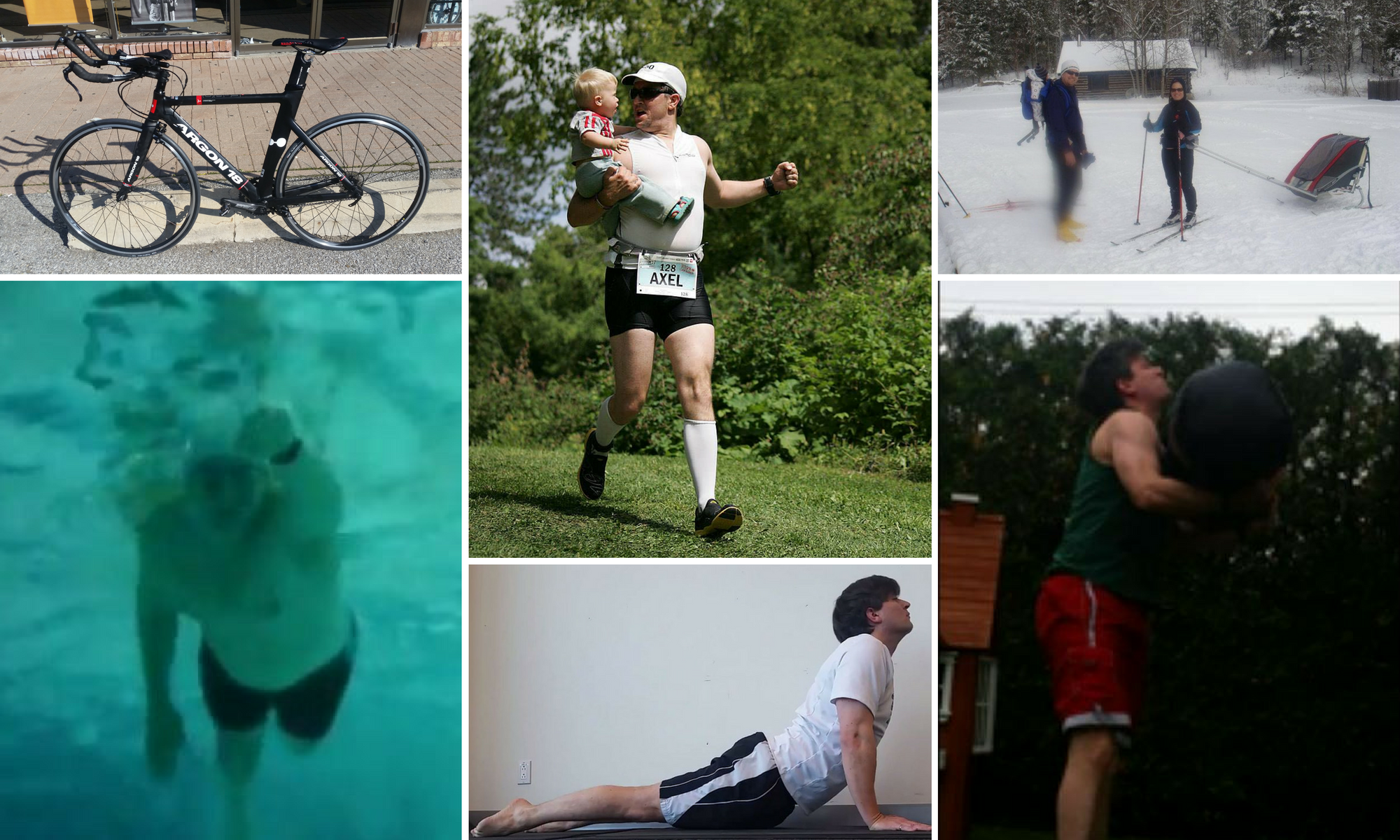There are an increasing amount of activity trackers on the market these days, including models from Jawbone, Polar and Samsung but I chose to get a Fitbit Flex. My reasons are that Fitbit syncs with Earndit and Pact, as well as I could get one for Air Miles (which I had racked up enough of).
The Fitbit Flex came with two wristbands (one large and one small) as well as a USB cable for charging. Inserting the unit into the wristband of choice is easy enough – in fact, it seems to be fitted so that you can’t put in in wrong and have the lights/LEDs not display. Fastening the wristband is straightforward, but not easy to do one-handed, especially if you don’t want the band to be too loose on your wrist. With a little practice, this becomes a non-issue. In addition to the cable, there is a wireless adapter that you plug into your USB port so the Flex can sync its recorded data automatically when it’s within range. I honestly don’t use this feature, since I always sync to my Smartphone or iPad with the Fitbit app.
I find I have to recharge the Flex every 3 days or so, possibly because I’m a little obsessed with seeing my data update and sync often during the day. If I’m not careful, the Flex won’t make contact in the little socket for the charging cable, and it won’t charge.
Though the app gives you all kinds of things you can track (manually entering activities, food log, weight, body fat%), my main motivation for using this thing is steps taken and tracking sleep.
Tracking Activity (Steps)
 |
| Saturday |
This is the Saturday before the Yonge St 10K. I took it easy, no workout, but I still had to take the kids outside, pick them up, a few light chores around the house. So I still burned well over my recommended 2100 calories. This is one of the things I like best about having the Fitbit Flex. I wanted to write a post about ‘The Calories I Can’t Count” for all those little things that tire, without being part of a workout or training plan. Now I have a rough measurement.
 |
| Sunday |
Sunday was the race, so you can see how I racked up the steps, calories and ‘very active minutes’.
 |
| Monday |
The day after the race, was one of those days where I would usually have to miss my slotted workout (which I usually do at lunch). I was on a training course all day, which usually makes for a very sedentary workday. Here’s where Fitbit (and GymPact) help; I parked far away from the office, took stairs and extra walks on every break I got, and managed to exceed 10,000 steps on a day where I was booked too heavily to make it to the gym.
That training course lasted till Wednesday, and on Thursday I made it to an intense bootcamp class.
 |
| Before |
 |
| After |
The class had things like mountain climbers, lunges, and burpees, and I question how well the Fitbit Flex can track those movements since it’s only giving me credit for about 200 calories for the 40 minute class, and I’m pretty sure it’s worth than that (to say nothing of how the ‘active minutes’ didn’t increase much either).
All in all, the Fitbit Flex let’s me feel good about days when I seem to be tired without having done a ‘workout’ and is helping me stay active during non-workout periods and burning more calories during the day. I’d say it helped me with my most recent DietBet.
Tracking Sleep
My biggest problem is I think it underestimates my wake-ups. That night, the 3:00 wake-up (visible in red), was due to… um, a call of nature. But the Lightning Kid woke up at 4:30 and I had to rock him and put him back down. This involved some squirming on his part that often wakes him back up again, so I had to restrict his flailing – the point is that I was on my feet for 10-15 minutes and the Flex marked that as ‘Restless’ sleep. So I don’t put the most faith in this feature, but it’s better than nothing.
Overall, I’m really happy with my Fitbit Flex and continue to use it daily.
How do you feel about the activity tracker trend? If you have one, do you use it/like it?



















.jpg)









